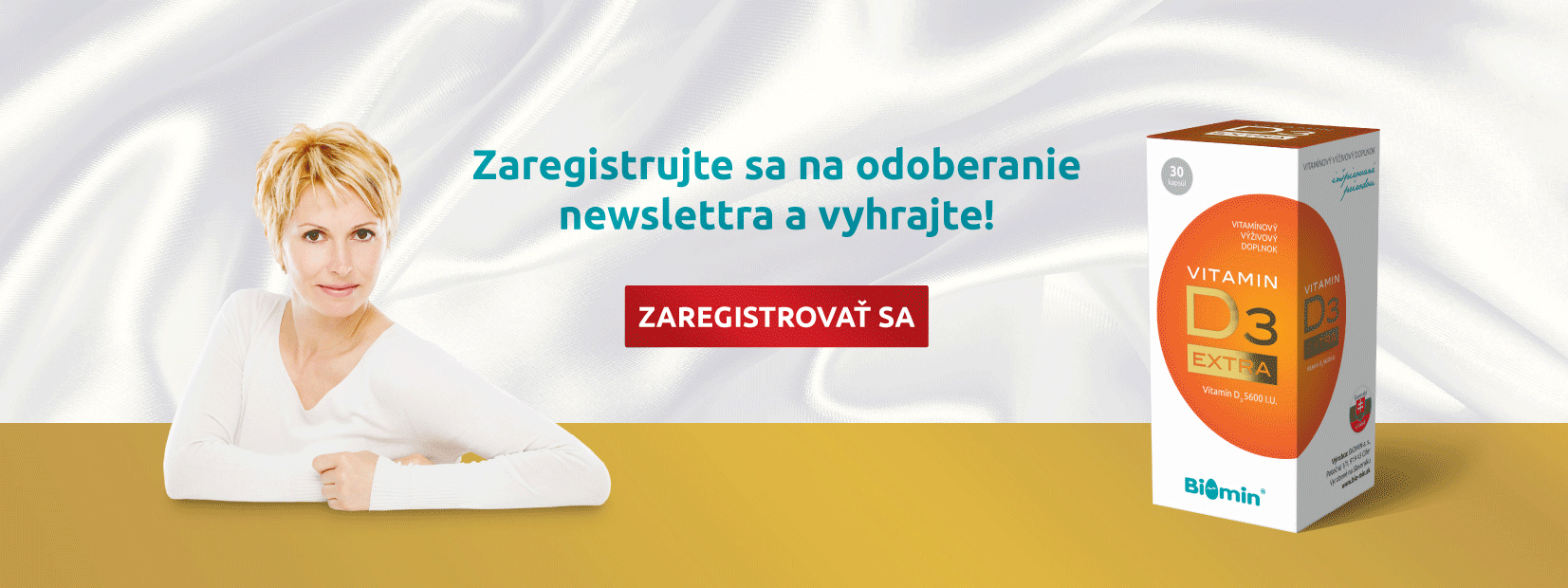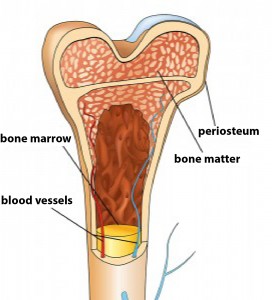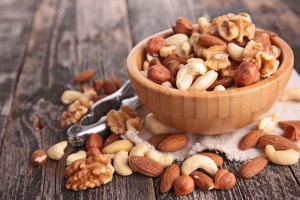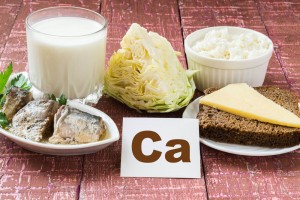Healthy bones
The bone is not an inanimate matter, but a living organism. It is composed of organic matter and 30% of it is responsible for bone elasticity. The remaining 70% of the bone matter is formed by mineral substances that are responsible for bone strength. Did you know that bones are the hardest tissues in the human body? They provide support and protect certain internal organs. We would not be able to move if there was not a functional ensemble of bones, muscles and joints. It is true that healthy bone should be firm, yet also flexible enough. The bone has ability to renew itself and, thanks to this ability, it can constantly repair its small or severe damages. In childhood and in adolescence the bone formation outweighs its degradation, which results in a bone growth. Later in life until in about 30 years of age, the processes slow down and there is a balance in bone degradation and formation, the bones do not grow anymore, and they retain their size and quality. This balance can be disturbed by nutrition, physical activity and hormonal changes and thus vitality and bone health can be significantly affected. After 30 years of age the bone mass decreases and it is in this period of human life when all former negative affects on the bone can manifest.
What may jeopardize the health of your bones?
- Heredity
- Poor nutrition – irregular meals, lack of calcium in a diet, uniform diet, anorexia, bulimia, …
- Passive way of life but, on the other hand, also excessive physical stress
- Frequent use of alcohol and caffeine drinks
- Smoking
- High content of salt in diet
- Certain medications – e.g. steroids
- Pregnancy
- Menopause
- Higher age
Risk of fractures
Apart from the disproportionate stress on bone, which is the result of a fall or collision, the bone quality might predispose bone for fractures, as well. The bones have an amazing ability to regenerate thanks to the cells that we call osteoclasts and osteoblasts. While osteoclasts continuously degrade the bone, osteoblasts rebuild it. The old bone has ability to be fully rebuilt in just a few months. Basically, osteoblasts play a role of the masons and calcium is the building material. If we do not have good quality calcium for osteoblasts, we will do not have good quality and strong bones. Calcium needs vitamin D3 for its utilization and vitamin K2 for directing the calcium to the right place in the body. The functioning of the bone cells may be influenced by several factors and the risk of fractures can be increased. We cannot influence heredity, but we can pay attention to a healthy lifestyle consisting of a balanced diet, adequate and regular exercise and sun exposure. An adequate supply of calcium, which keeps our bones strong and healthy, is also important. It is especially important when there is increase demand on our bodies (e.g. pregnancy, lactation, menopause etc).
The risk of osteoporosis in women
Since bone loss does not hurt, a lot of women, but also men do not know about having osteoporosis until it is too late. The statistical prediction is that one in three women and one in five men over 50 years of age suffers from osteoporosis. Every three seconds somebody in the world breaks bone as a result of osteoporosis. Do you know what are the symptoms of osteoporosis? Symptoms may include sudden and severe pain in particular point in the spine, weakness or pain in multiple bones, rapid fatigue when walking, significantly reduced body height. The typical symptoms of osteoporosis is the deflection of the spine into a significant hump, which has become irreversible consequence of the disease. Osteoporosis can lead to the fractures. The treatment of bone fracture might be especially complicated when it happens later in life. Each year there are more women who die as a consequences of hip fractures than women who die from ovarian, uterine and cervical cancer combined. It is advisable for premenopausal women to use calcium on regular basis in order to reduce the risk of osteoporosis. The combination of calcium together with vitamin D3 and K2 is appropriate in order to help the body to properly utilize calcium. This will result not only in strong and healthy bones, but you will feel healthy and fit, as well.
How should a menu rich in calcium look like?
| Breakfast (425 mg calcium): | 1 cup of milk, 2 whole wheat bread, cottage cheese |
| Snack (40 mg calcium): | 1 apple |
| Launch (145 mg calcium): | broccoli soup, beef on rice, grated carrot |
| Snack (255 mg calcium): | plain yogurt, 1 whole wheat bread |
| Dinner (150 mg calcium): | 2 whole wheat bread slices, cottage cheese spread with chives |
Beautiful teeth
Do you have beautiful white teeth? If not, do you at least try to achieve an ideal condition? Do you clean your teeth several times every day, use interdental brushes, threads and regularly visits your dentist? That’s however not enough, if you do not have sufficient calcium intake, because teeth, as well as bones, need calcium. If you have problem with periodontal disease, premature loss of teeth, caries, inflamed gums, it may be caused by a calcium deficiency. Test yourself on calcium intake in your diet.
Did you know that …
- a foundation of the teeth is formed as early as in the 10th week of pregnancy? Increased intake of calcium during this period of time is therefore not only important for maintaining healthy teeth of the mother, but also for healthy teeth of a child.
- untreated tooth caries, gingivitis or periodontitis may cause a variety of serious diseases including a stroke or heart attack? Inflammation of the mouth may give rise to premature delivery, and it can also increase the level of blood sugar, which is a particular risk for people with diabetes.
- the foundation of child’s permanent teeth develops already during the development of milk-teeth? Taking care of the baby teeth is therefore extremely important for the health of the permanent teeth. When the baby teeth are very spoiled, the new teeth are developing in infectious environment, which increases the risk of tooth caries.
- the risk of loss of teeth is higher in smokers than non-smokers?
- following an illness, you should replace your tooth-brush with a new one? The old tooth-brush can hold bacteria and you can be infected again.
Strong immune system
Vitamin D3 plays a key role in strengthening the immune system. We obtain vitamin D3 mostly by action of the sunlight and its content is only negligible in the food. Vitamin D3 is able to activate T cells of the immune system that are responsible for finding and destruction of dangerous bacteria and viruses. Thus, sufficient amount of vitamin D3 may prevent us from developing a common cold or flu. Since we can ge vitamin D3 mostly from the sun and sunlight is not intense throughout the whole year, the period from November to February, that has less sunlight, becomes especially critical for us. This is evidenced by the fact that during summer we are rarely sick, while during fall and winter more people are sick and every year there is a flu season as well.
Vitamin D3, in addition to being involved in the immune process, it is involved in the regulation of blood pressure, the growth of blood, muscle, and skin cells, but its most important role is in maintaining the proper levels of calcium and phosphorus in the blood. Therefore it is advisable to take not only calcium but also vitamin K2 and vitamin D3.
Why should I take calcium?
Why calcium does not work without vitamin D3?
Why women need more calcium than men?
What do I need also vitamin K2?
How is a natural calcium OVOVITAL® from the company BIOMIN different?
Why is vitamin K2 considered to be a miracle vitamin?
How is manifested lack of calcium?
All I need for a sufficient intake of vitamin D is to be in the sun?














